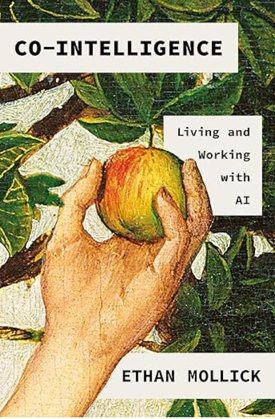A scholar conducts a 6 year study of student writing and finds that, despite constant accusations that social media is taking writing downhill, actually "we're in the midst of a literacy revolution the likes of which we haven't seen since Greek civilization." I have to agree -- it is a cool effect that the social web is creating. The world needs more writers.
This Manifesto for Slow Communication (linked by Karen Mardahl) will make you think twice about the benefits of social networks, email, Twitter, Facebook, IM, and all the constant noise, hectic rushing, and mindless processing that it produces in your life. Busyness—or the simulated busyness of email addiction—numbs the pain of this awareness [awareness of death], but it can never totally submerge it. Given that our days are limited, our ...
Fascinating NYTimes.com article about why teenagers don't use Twitter (linked by Eddie VanArsdall). A few reasons teens avoid Twitter: it makes it difficult to hide what they're doing, parents don't want teens interacting with strangers, the communication is less friend driven and more professional oriented, the tweets are better for marketing or asking questions or broadcasting ideas. Although I tweet, I certainly wouldn't want my kids o...
Listen here: As a follow-up to my review of Anne Gentle's book, Conversation and Community: The Social Web for Documentation, I also interviewed her for a podcast. Now you can listen to Anne talk about some of the concepts in her book in a more personal way through the headphones of your iPod. In this 40 minute podcast, we cover questions such as the following: What's the first step in connecting with your users? Why a...
One of the perks about being a blogger is that authors occasionally send me their books to review. Recently Anne Gentle sent me her new book, Conversation and Community: The Social Web for Documentation. Anne's book is particularly important because it addresses the situation of the technical writer today, with the web in the state it is -- user generated, filled with blogs, wikis, Twitter, Facebook, social networks, and speckled with com...
Jakob Nielsen explains that with web 2.0 communities, 90% are lurkers who never contribute, 9% contribute a little, and 1% actively contribute. I wish I knew the secret formula for reversing those statistics. Nielsen mentions a few strategies for improving those stats at the end. One strategy is to take advantage of"read wear," which refers to the natural marks of reading. Online, I believe it means to give more weight or to make more vis...
I enjoyed David Farbey's post on the name we should call our profession. Aligning our name with the most profitable business model makes sense. If you look at indeed.com for jobs as a "technical communicator," you won't find hardly any. Look for "technical writer" and you find a ton. So what is the benefit of calling ourselves technical communicators, when no one is hiring technical communicators?
In a world of increasing social media, work, activities, and other obligations, it's easy for our lives to become quickly cluttered. Just last week an old friend wrote and explained that she was finally listening to some of my podcasts and really enjoyed them. In particular, she listened to the podcast with Ricardo Amigo about technical writing, in which I explain some of the new tools (i.e., Flash and Illustrator) I'm trying to learn. My...
LugIron recently praised a video response that a vendor made to a customer, calling it "an outstanding example of Social Documentation at work." The customer loved the video, especially given that it was personally created by the company founder. Ten years ago, such a quick response wouldn't have been possible except at a large time cost from the company. But with the software tools today, even sharing multimedia documentation is somewhat...
Kai Weber linked to this in the technical communication newsgroup, and I found it pretty funny. Extremely well-written and entertaining, this short humor piece pokes fun of the language the technical writer ("Ezekiel") uses. It makes you realize that your audience is not always the quick-reading, frustrated user we sometimes assume. Sometimes it's a linguist who revels in every little detail.
I hadn't heard of the term "social documentation" before, but it describes the Twitter responses, video replies, and other social media formats that support centers use to provide responses to technical problems customers ask about. This post by LugIron shows an example of a video response. The problem with social documentation is that, if it's not incorporated into the documentation, the support center will have to respond again -- and a...
LinkedIn, Twitter, Facebook are all becoming key tools in job searching, helping candidates and employers connect with each other. Social media is no longer something that people should hide. Thanks @stcsandiego for the link.
All the money spent on making classrooms smart and high tech is basically a waste, since students find these formats boring. What really engages people is discussion and participation. Teachers should strip out all the "smart" gear and reformat the classroom back to the same structure that existed in Athens. (Link courtesy of tc.eserver.org)
Eddie VanArsdall reviews three books on DITA in his post, Slouching Toward Ditaville. If you're interested in adopting DITA, or even if you just want to borrow some of its best practices, check out one of these books -- by Rockley, Vazquez, and Comtech.
Zinepal is a service that takes your RSS feed and automatically converts it into newsletter/magazine-like PDF or Kindle format. This would be great for chapters who still send out paper newsletters that pull content from their blogs.


